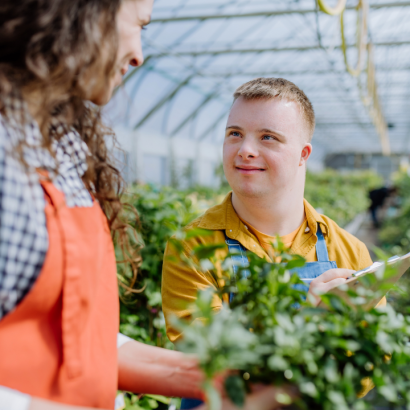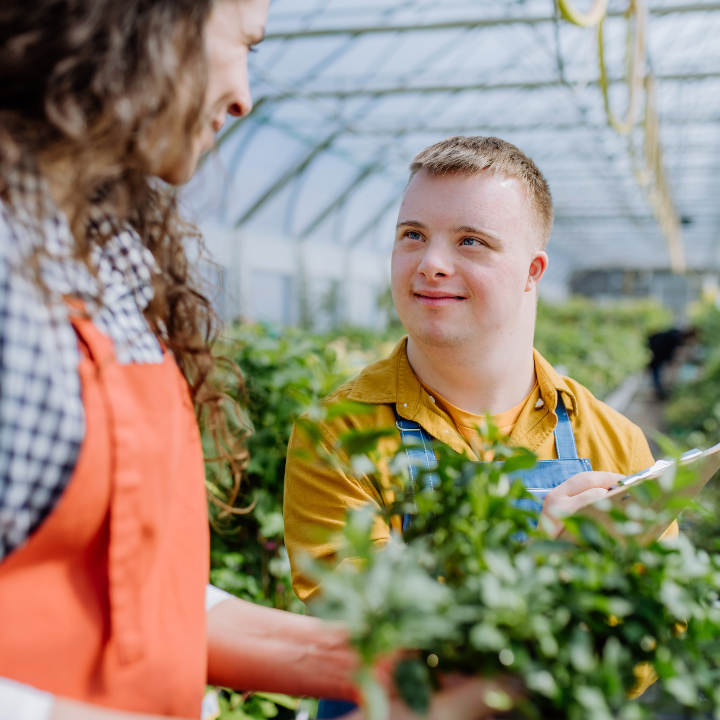The original version of this article was authored by Linda Hughes, UpSkill Lead of the Summer Foundation. Some of the articles linked below are from the Home and Living Topic Library.
Individualised living offers an opportunity for a person with disability to live with others who may not have a disability. Though many people with disability need support to live independently, different roles such as house-sharers or hosts can also provide assistance, mentoring and companionship to the person with disability. With individualised living options, the home becomes shared, with shared roles and responsibilities. Each living arrangement is personally tailored with an emphasis on friendships and sharing lives as well as mutual benefit to all involved.
While each individualised living arrangement is unique, there may be situations where house sharers or hosts are provided with a financial benefit. This might be reduced or free rent, or a financial payment as reimbursement for the support they provide to the person with disability. This reimbursement is usually not a wage or an hourly rate. Payments or benefits need to be fair, without being an incentive purely for financial gain. These payments or benefits can be included in a person’s ILO package in their NDIS plan.
For many, though, this raises questions of safety and security for people with disability living in ILO arrangements. Learn more about how the NDIA has addressed concerns about safety and security. Learn more about the expectations of providers.
An important part of exploring and designing ILO, are the strategies that will address any vulnerabilities faced by the person with disability.
ILO providers who support host arrangements will need to be registered providers and comply with the NDIS Commission’s practice standards. All ILO providers need to abide by the NDIS Commission’s Code of Conduct. ILO providers must ensure that housesharers and hosts are properly vetted – these processes should include criminal records checks (police checks) and other formal checks, references and interviews. ILO providers are also responsible for ongoing monitoring of the arrangement. Regular check-ins with the participant and their house sharer/s or host to ensure the arrangement continues to meet the participant needs, that everyone is being adequately supported and any risks are managed quickly and appropriately.
While regulatory frameworks are important, we also know these are not the only way people with disability can be safeguarded.
People with disability are safer when they are socially included, connected to their community, have people looking out for them or catching up with them daily. Family and friends, circles of support and microboards all enhance a person’s safety. Making decisions or being supported to make decisions about their own life and being able to speak up for themselves, again enhances personal safeguards.
ILO can be the fertile ground for a person with disability to build their personal safeguards through increased social connectedness, building of strong relationships and control over their living arrangements.
Intentional safeguarding
The original version of this was authored by Community Resource Unit, Queensland. Visit the The Bringing the Good to Life website.
On one level, safeguarding is about protecting and defending people; putting in place measures to minimise the risk of danger and of undesirable things happening. On the other, it is about developing safeguards that help promote and protect a full and enriching life for a person. Both kinds of safeguards are important and need not be in competition with each other.
Understanding the nature of an individual’s vulnerability, anticipating things that might go wrong and dealing with issues as they arise can help minimise harm to all aspects of a person’s life. This practice is known as intentional safeguarding.
Being safe from physical danger and emotional harm is important, but safety alone is no guarantee of living a full and satisfying life. It is necessary to understand what would allow an individual to thrive, not just survive, and then to safeguard this life into the future.
An overarching strategy of intentional safeguarding is to develop a strong and clear vision for the best possible life for an individual and to actively plan how that vision can be enacted and then protected in the future. This means not just planning for personal safety, but planning for all the elements that make up a full life and which work to keep a person safe through having a life connected with others.
No one can hope to predict all the possibilities that might happen to change the circumstances of a person’s life or to avoid negative things happening. However, developing intentional safeguards that protect both personal safety and an individual’s well-being and personal fulfilment is possible. Expecting change and being prepared to respond when needed are positive steps to help ensure that the people we care about are safe and happy in the future.
Planning — and beyond
Planning itself is not enough of a safeguard on its own. No matter how detailed and imaginative the plans, they must be flexible and adapt to the change that will inevitably arise: accidents occur and people get sick, governments are voted out and funding arrangements change, people move away and relationships do not last without being nurtured.
This is why it is important that safeguards are factored into each strategy and are regularly reviewed in the same way the original vision and plan are reviewed. This practice develops a safeguarding mentality: to live and act with a realistic acknowledgement that change happens and people are vulnerable to being hurt as a result.
Relationships are the most effective safeguard
Having a strong vision for a good life, planning to make that happen and developing individual safeguarding strategies are all important, but in the end, the most effective safeguard for anyone in life is to have strong and committed relationships. People who know us, who care for our wellbeing and who will stand up for us. People we can turn to when things go wrong.
Let’s bring this together in an example. If one strategy is to form a support circle or network, then a way to safeguard this strategy would be to work actively to keep the network or circle strong, acknowledging that people will move on for a whole variety of reasons. By anticipating this, you can continue to be open to new relationships and to sharing the vision of life with others who may then accept the invitation to be part of the ongoing group.
What are other foundations?
- Assuming capacity – understanding how a person communicates and making available what they need to communicate their needs and opinions
- Protecting and renewing vision – what do the person and their key supporters need to keep their vision alive in spite of all the outside influences?
- Keeping on track with your support – the systems that help a person make decisions about their arrangements. Who makes the important decisions? How are these made? Who is consulted? How do you keep everything on track?
You can find a wealth of videos, stories and resources about these foundations by going to the Bringing the Good to Life website.
For example, this is a great plain language resource that explains vulnerability, safeguards and helps people to describe what this looks like in their life.
How it looks in action
Sally Richards has written how she brought these foundations together with her son, Jackson. Richards writes, “Jackson needs to be part of a community that will grow around him and with him as he matures. However, unless we do some structural work on his community, he risks living always on the edge of life. His community needs assistance, encouragement and support to include him fairly and squarely in its midst. To provide these vital incentives, I have developed, over the past five years, four supporting structures which are interconnected. Each of the four structures: family governance, planning, a circle of support and a small business, is vital to the overall sustainability of Jackson’s place in his community.”

